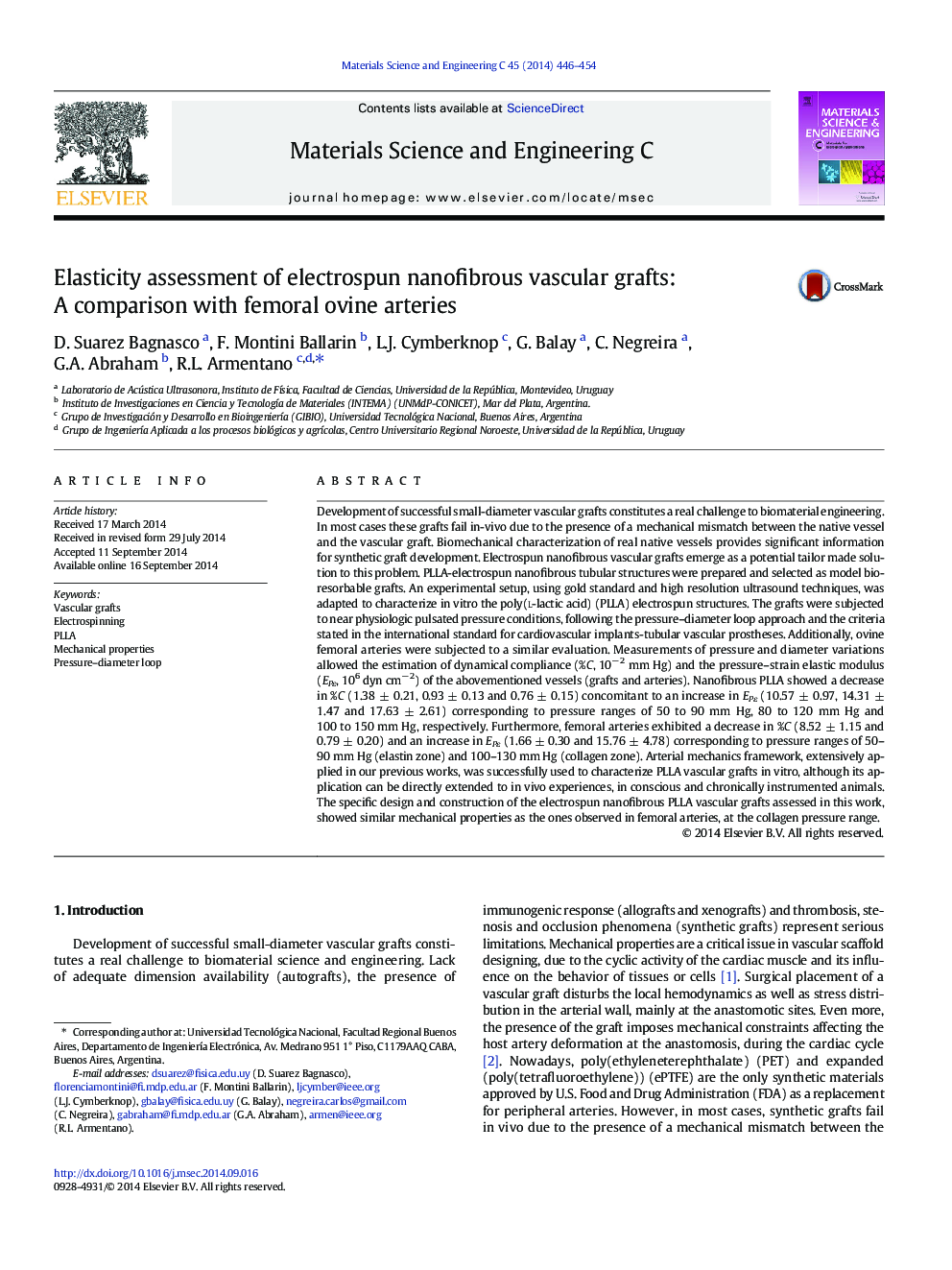| کد مقاله | کد نشریه | سال انتشار | مقاله انگلیسی | نسخه تمام متن |
|---|---|---|---|---|
| 1428579 | 1509176 | 2014 | 9 صفحه PDF | دانلود رایگان |

• Arterial mechanics framework was used to characterize PLLA grafts in vitro.
• The framework can be extended to conscious chronically-instrumented animals.
• Dynamical compliance was estimated from pressure and diameter measurements.
• Pressure-strain elastic modulus of grafts and arteries were also determined.
• Grafts showed a mechanical behavior similar to collagen in femoral arteries.
Development of successful small-diameter vascular grafts constitutes a real challenge to biomaterial engineering. In most cases these grafts fail in-vivo due to the presence of a mechanical mismatch between the native vessel and the vascular graft. Biomechanical characterization of real native vessels provides significant information for synthetic graft development. Electrospun nanofibrous vascular grafts emerge as a potential tailor made solution to this problem. PLLA-electrospun nanofibrous tubular structures were prepared and selected as model bioresorbable grafts. An experimental setup, using gold standard and high resolution ultrasound techniques, was adapted to characterize in vitro the poly(l-lactic acid) (PLLA) electrospun structures. The grafts were subjected to near physiologic pulsated pressure conditions, following the pressure–diameter loop approach and the criteria stated in the international standard for cardiovascular implants-tubular vascular prostheses. Additionally, ovine femoral arteries were subjected to a similar evaluation. Measurements of pressure and diameter variations allowed the estimation of dynamical compliance (%C, 10− 2 mm Hg) and the pressure–strain elastic modulus (EPε, 106 dyn cm− 2) of the abovementioned vessels (grafts and arteries). Nanofibrous PLLA showed a decrease in %C (1.38 ± 0.21, 0.93 ± 0.13 and 0.76 ± 0.15) concomitant to an increase in EPε (10.57 ± 0.97, 14.31 ± 1.47 and 17.63 ± 2.61) corresponding to pressure ranges of 50 to 90 mm Hg, 80 to 120 mm Hg and 100 to 150 mm Hg, respectively. Furthermore, femoral arteries exhibited a decrease in %C (8.52 ± 1.15 and 0.79 ± 0.20) and an increase in EPε (1.66 ± 0.30 and 15.76 ± 4.78) corresponding to pressure ranges of 50–90 mm Hg (elastin zone) and 100–130 mm Hg (collagen zone). Arterial mechanics framework, extensively applied in our previous works, was successfully used to characterize PLLA vascular grafts in vitro, although its application can be directly extended to in vivo experiences, in conscious and chronically instrumented animals. The specific design and construction of the electrospun nanofibrous PLLA vascular grafts assessed in this work, showed similar mechanical properties as the ones observed in femoral arteries, at the collagen pressure range.
Figure optionsDownload as PowerPoint slide
Journal: Materials Science and Engineering: C - Volume 45, 1 December 2014, Pages 446–454